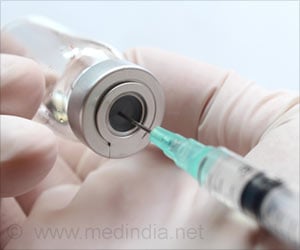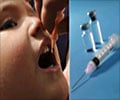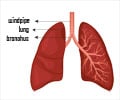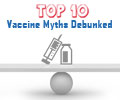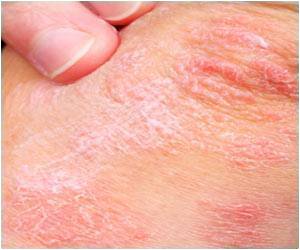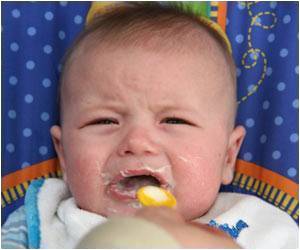
‘PCV10 vaccine reduced the incidence of pneumococcal disease not only among vaccinated children but also among older, unvaccinated age groups too, indicating that the vaccine produced "herd immunity" benefitting the entire community as vaccinated children no longer transmit the disease.’
Read More..Tweet it Now
The researchers examined two time periods, 1999-2010, before the vaccine's introduction and 2012-2016, after its introduction, and found that the average annual incidence of serious pneumococcal disease caused by S. pneumoniae strains that the vaccine is designed to prevent dropped by 92 percent among children under five years of age.Read More..
The incidence of disease among older, unvaccinated age groups also dropped sharply, suggesting that the vaccine produced an added "herd immunity" benefit. This occurs because children who have been vaccinated no longer transmit the disease in the community.
S. pneumoniae infection can cause many serious conditions, which are broadly termed "pneumococcal disease" and include pneumonia, meningitis, ear and sinus problems, and sepsis (blood infection). These are one of the important cause of mortality among children in the developing world.
Children are especially vulnerable to pneumococcal infection and while pneumococcal vaccination programs in wealthier countries have greatly reduced the burden of pneumococcal disease, access to pneumococcal vaccines lagged behind in lower-income countries.
As recently as 2015, pneumococcal disease still annually claimed the lives of more than 300,000 children age five and under around the world.
Advertisement
Kenya until 2011 did not have a pneumococcal vaccine in its national childhood immunization schedule. In that year, though, with assistance from a global health organization called Gavi, the Vaccine Alliance, it introduced PCV10, also called Synflorix, which is designed to protect against 10 common strains of S. pneumoniae.
Advertisement
The study population included people living in and around Kilifi, a town on Kenya's Indian Ocean coast. The research was a collaboration involving the Bloomberg School, Oxford University, the London School of Hygiene & Tropical Medicine, Kenya's Ministry of Health, Kilifi County Hospital and the Kenya Medical Research Institute (KEMRI)-Wellcome Trust Research Program in Kilifi.
The researchers calculated the incidence, or annual rate per capita, of serious ("invasive") pneumococcal disease cases involving the ten PCV10 strains in children less than five years old at the hospital during the years 1999-2016.
They then compared the average incidence during the 1999-2010 pre-vaccine period to the average incidence in 2012-2016 after the vaccine was in routine use. Comparing these before and after periods, they found that the incidence of invasive pneumococcal disease in children under five, involving those ten pneumococcal strains, declined 92 percent.
The number of cases of invasive pneumococcal disease involving the PCV10 strains in children younger than five fell from an average of 25 per year in the pre-vaccine era to just one per year in the vaccine era.
The study also found that pneumococcal disease caused by non-PCV10 strains did not increase to fill the gap left by the vaccine. "There are many different strains of pneumococcus so it is important to monitor whether strains not included in the vaccine begin replacing those that are. This could potentially erode some of the benefit of the vaccine through so-called replacement disease," Hammitt says. "Fortunately, we haven't seen any evidence of significant replacement disease now six years after the introduction of PCV10 in Kenya."
For invasive pneumococcal disease involving any S. pneumoniae strain, the average incidence dropped by 68 percent and there was also an 85 percent reduction in pneumococcal pneumonia among children younger than 5 years.
The study revealed an added benefit from "herd immunity," in which vaccinating children led to reductions in disease in older, unvaccinated age groups by reducing the spread of infection in the community.
The researchers found that the incidence of pneumococcal disease involving PCV10 strains among infants younger than two months--those too young to be vaccinated--declined from 173 per year per 100,000 population in the pre-vaccine period to zero after the vaccine was introduced.
Similarly, the researchers saw declines in incidence of 74 percent and 81 percent, respectively, among children between five and 14 and those who were older than 14--groups that were not vaccinated.
Herd protection is what makes the vaccine cost-effective in high-income countries but it has not been observed in tropical Africa until now. "The herd immunity provided by PCV10 is important not only because it improves the health of the population as a whole, but also because it makes the vaccine more cost-effective," Hammitt says.
In addition to monitoring invasive disease, the study team also conducted "carriage surveys" in which they tested for pneumococcal bacteria in the noses of more than 4,000 Kilifi-area residents. These surveys showed declines in carriage of the PCV10 strains for all age groups from the pre-vaccine period to the post-vaccine period, which aligns with the observed declines in invasive disease.
However, among children, carriage of the vaccine strains of S. pneumoniae remained higher than in wealthy-country settings (6 to 8 percent in Kilifi compared to less than 1 to 2 percent in the U.S.).
"Persistent carriage of vaccine strains could lead to rebound disease if vaccine coverage levels do not remain high," Hammitt says. The study team plans to continue surveillance to monitor for any shifts in carriage and disease.
"We have demonstrated a strong operational impact of PCV10 use in Kenya," Hammitt says. "Policymakers face difficult decisions about how to best use limited financial resources. Data like these provide critical evidence to support investment in childhood pneumococcal conjugate vaccine programs to improve the health of the population."
Source-Eurekalert

